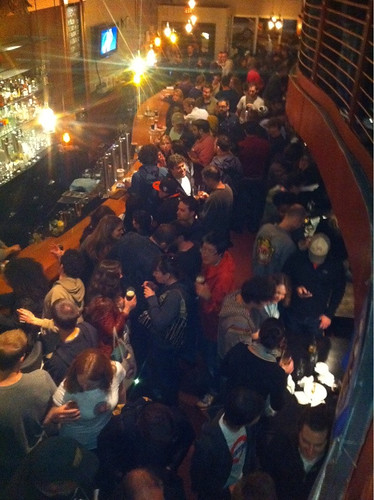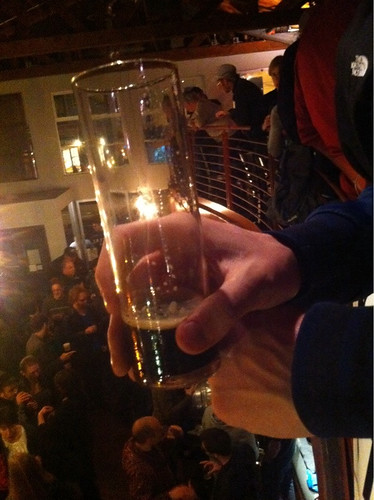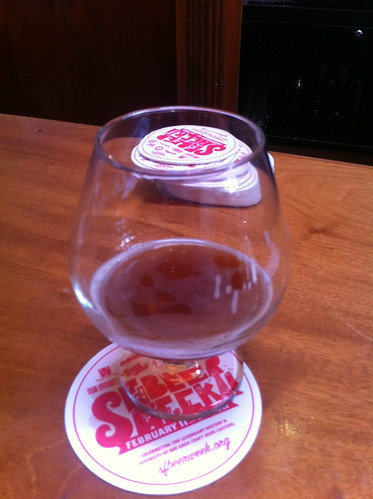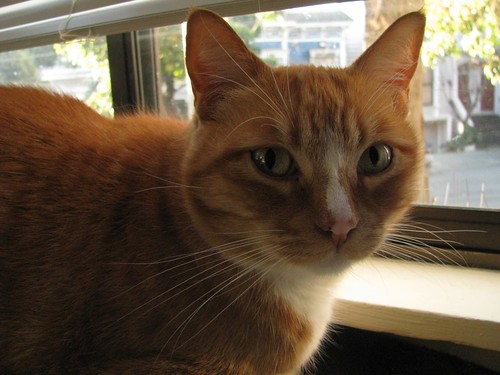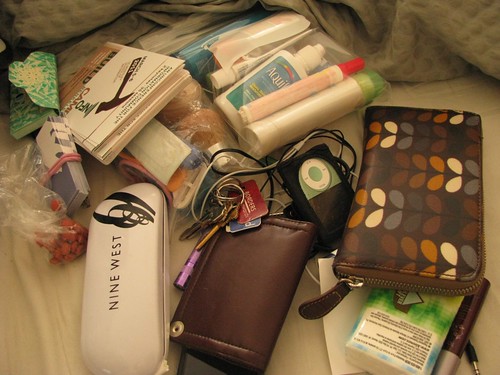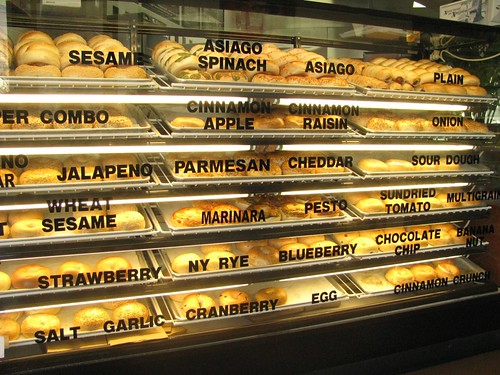To delve deeper into issues of what makes a narrative — and how that story can be received by an audience with different levels of knowledge about the root material — I chose the following video of the first day of this past weekend’s InfoCamp, made by the I School’s Paul Goodman.
At first glance, this short video doesn’t appear to have a lot in common with my class project. (What does the first day of a conference have to do with how people watch television?) But while their content and subject matter are quite different, the InfoCamp video and my project must address, or attempt to address, issues of narrativity and “trueness” and be constructed in a way that accounts for the levels of meaning that different members of the audience may bring to the story. I have struggled with how to make sure the interviews I’m doing end up used in a fashion that feels fair to my interviewees; in that way, watching a video in which I appear was an interesting exercise in seeing whether the depiction felt fair to me.
For the sake of this post, I want to discuss whether this video is a narrative. But my viewing and writing are absolutely informed by (and tinged with bits of) Sturken and Cartwright’s writing on “the myth of photographic truth” and our class discussions of such issues. In essence, this video is a surveillance video — recording events as they happened, no words, just movement — framed in a particular way to show a particular slice of the event. And yet for all its surveillance conventions, it’s not objective. It’s altered, sped up and set to music, cut together in a particular way to evoke a particular feeling. I recognize this event (see also: Barthes), but it’s not the event as I experienced it.
So: Is it a narrative? It absolutely has temporal events, and many of them, as per Steiner’s definition; the video shows the passing of time. (I know that, because I was there, but I believe even a viewer coming to this video fresh would see discrete events and even gain some sense of their time order: a room begins to fill up with people; an empty board has papers tacked to it by the end; people leave one building and enter another.) Characters appear, disappear, and reappear as they move throughout the building; the first time I saw the video, I was struck by how many times one person in particular seemed to go up and down the stairs. The repeated characters help to keep the viewer anchored in the narrative: “Oh, there’s that girl with the headband again!”
But could the events in this video really be “double ordered”? The video itself is sequential; the events it depicts are also sequential — again, something that I know from being there, but something that the structure of the video strives to make clear as well. Could a viewer zoom to a particular part of the video and tell a story from just that? Re-order the footage and tell it backwards? I’m not sure. What I do know, though, is that even if the temporal ordering stayed the same, the retelling of the story would almost certainly be different for different viewers. People who were there might look for themselves and remember what they were doing in the moments the video caught them; I certainly do. People who weren’t there might make up their own stories about what’s happening, because aside from a few text titles sprinkled throughout, there’s nothing in particular to explain the events.
This video also seems to gel with Ryan’s definition of narrative. A setting? Yes; we see the event’s world — or, more accurately, worlds — clearly. (Back to Steiner for a second: the buildings almost become their own characters in this story, as we start at one, leave for another, and return to the first.) Characters? Yes, those repeating figures who dart in and out of the frame. Actions and happenings? Yes: people drink coffee, bound up and down the stairs, pin papers on boards, greet each other. Changes in the narrative world? I believe so; the main room shown at the start of the video looks and feels different at the end than it does at the beginning, and we see conversations start and stop — little changes in those people’s worlds, even if we can’t hear or understand them.
And yet: Even though this video seems to fit both Ryan and Steiner’s definitions, even though it has a clear temporal ordering that define its start and finish, and even though my own definition of narrative when we first discussed these two pieces in class should be sufficiently broad to encompass this video as an absolute example of a narrative, some part of me still wonders if it is. Are time, characters, and setting really enough? Can a start and an end of some event fully constitute a plot? Perhaps it’s because I know that the end of this video isn’t the end of the event, but it feels unfinished to me. I want to know more; I want to see how it wraps up. But for someone else, someone who wasn’t there, perhaps this video tells a satisfying story (or lets the viewer tell him or herself one). I’d be curious to know.
One final note: I wonder about the decisions made about the music for this video. Why this score? Why paced this way? On my third or fourth viewing of the video, I realized it wasn’t actually the music itself that fascinated me but the way it matched different segments of the action and didn’t — to me — seem to match others. The soundtrack is consistent here; it’s all instrumental except for the lyrics that come in right at the end and essentially serve as another signal that the narrative is done. I don’t know the source song well enough to know if it’s all one piece of music, but it certainly could be. What strikes me is how well it seems to gel with the (artificially accelerated) movements at the start and finish of the video, and how it seems out of place with the more natural-time sequences in the middle. And again, I think this has something to do with how I experienced the event. The first and last few scenes of this video really did feel that rushed, and the music seems a perfect soundtrack to the frenetic activity. But the middle segment, when the keynote speaker takes the stage, was a chance to breathe. The event felt like it slowed down at that point; the rush ended and time reverted to its normal pace. The video slows down, perhaps to mimic this. But the music pushes relentlessly on; it doesn’t let us rest.

